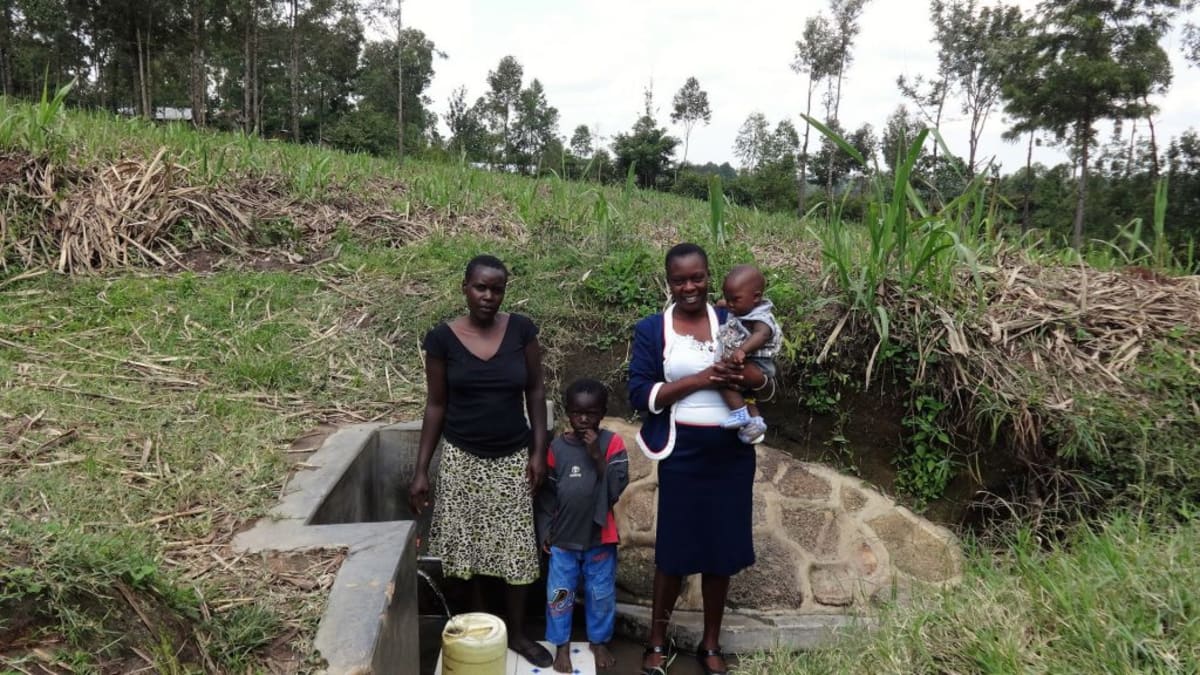This project is a part of our shared program with Western Water and Sanitation Forum (WEWASAFO). Our team is pleased to directly share the below report (edited for clarity, as needed).
Welcome to the Community
Most of the population in this area is from the Butsotso sub-tribe. Those who live in Luanda Village start their days very early. When the men wake up, they immediately head off to work on their farms. When the women get up, they help their children get ready for school. Once everything is finished around the house, wives will join their husbands. These farmers specialize in raising dairy cattle and growing maize, sugarcane, ground nuts, bananas, and other vegetables. When there isn't anything to be done on the farm (which is rare), men will undertake stone excavation or sand harvesting to supply local construction distributors. A lot of the money these parents earn is invested in their children's education. These folks are extremely hardworking.
Luanda Village is home to 280 people from about 40 different households.
Water Situation
These 280 people rely on Richard Spring for their water. They use it for drinking, cooking, household chores, and irrigation during the dry season. The women and children are those primarily responsible for fetching enough water for their families.
Community members say that the spring has never failed to supply them with water, even after long periods without rain. But the spring is unprotected, meaning that it is open to contamination from many different sources. Some of these contaminants are from surface runoff that washes feces, chemicals, and other waste into the water when it rains. Other times, animals live in or drink from the water.
Once water is delivered back home, it is separated into containers by use. Water for drinking is stored in clay pots, because these keep the water cooler. Water for cooking and cleaning is kept in open plastic containers anywhere from 50 to 100 liters. After drinking water from Richard Spring, community members complain of typhoid, amoebas, and diarrhea-related illnesses.
Sanitation Situation
More than half of homes in this area do not have pit latrines, forcing family members to use the privacy of bushes. This endangers the entire community. Those who do have latrines have made them out of mud, wood slats, and banana leaves. The same low number of homes have bathing rooms for personal hygiene. There are no places to wash hands. Most people dispose of garbage on their farms, separating the biodegradable to make compost.
Plans: Hygiene and Sanitation Training and Sanitation Platforms
This community requires training on good hygiene and sanitation practices for them to improve the environment they live in. They will learn about how to keep a clean environment and maintain personal hygiene.
Community members will be trained for three days on a variety of health, hygiene and sanitation topics. This training will result in community members donning the roles of health workers and water user committee members. The training facilitator plans to use PHAST (Participatory Hygiene and Sanitation Training), CLTS (Community-Led Total Sanitation), and ABCD (Asset-Based Community Development) methods to teach community members, especially the women and children who feel the burden of household responsibility. Training will equip each person with the knowledge needed to practice viable and effective health solutions in their homes and at the spring.
During training, we will take this community on a transect walk to sensitize them to some of the more serious health threats. The transect walk will teach locals to watch for practices that go on and facilities that are present related to good health and hygiene. Sometimes, a participant feels shame when the group arrives at their household and points out things that are unhealthy or unhygienic; but in Kenya, this affects people to make a positive change. Training participants will also vote on and decide the families that should benefit from the five new sanitation platforms. These five families will have to prepare for the platform by sinking their own latrine pit.
Training will also result in the formation of a water user committee that will oversee and maintain the spring protection. Other training participants will join a group of community health workers who will promote and teach healthy habits to their neighbors.
Plans: Spring Protection
Fetching water negatively affects women and young girls on a daily basis. It holds them back from getting more important things accomplished. Protecting Richard Spring will empower the female members of the community by creating more time for them to engage with or invest in income-generating activities. Protecting the spring will improve the health of all community members. Since they heard the news, everybody has been very optimistic. One of the local mothers, Susan Makokha, told us "Getting clean water for the community has been difficult, but at least God has remembered us through WEWASAFO."

 Protected Spring
Protected Spring
 Rehabilitation Project
Rehabilitation Project



























